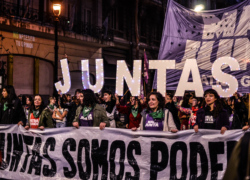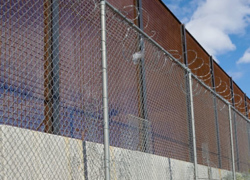Interesante análisis publicado hoy en el boletín electrónica, Oxford Analytica, de la condición actual de la educación en Chile, y las propuestas de Piñera.
Llama la atención:
- Puntajes claramente bajas en las pruebas de lectura y matemática, inclusivo en los colegios privados que sierven a los elites;
- Alarmante brecha entre puntajes de alumnos ricos y pobres;
- El SIMCE mide habilidades mientras el PSU (prueba para entrar a la universidad) mide conocimientos;
- Piñera promete reducir la inamovilidad de los docentes;
- Intención de promover la reforma pactada por Bachelet;
- Propone establecer 50 escuelas publicas de excelencia;
- Controvertida comparación de colegios por su rendimiento en las pruebas sin tomar en cuenta el nivel socioeconómico de los alumnos; y
- Sugerencia por el autor que el éxito de Piñera dependerá de su voluntad a “face down the Teachers’ Union”.
CHILE: Education remains obstacle to development
SUBJECT: Poor progress on educational standards.
SIGNIFICANCE: Over the past 20 years, while income has increased and poverty been reduced, educational standards have shown little improvement and are widely identified as the most important barrier to Chile’s future economic and social progress.
ANALYSIS: In the 1990s, public expenditure on education in Chile rose from 2.4% to 3.9% of GDP, financing an increase in coverage, which became virtually universal, and improvements in school infrastructure and equipment. Gains in pupil attainment were expected to follow but, as shown by the latest tests carried out under the System of Measurement of the Quality of Education (SIMCE), are proving elusive (see CHILE: ‘Last mile’ to development the hardest – March 11, 2009).
The tests, conducted in November, measured the reading and maths skills of fourth and eighth-year primary schoolchildren (approximately 9 and 13 year-olds, respectively) with disappointing results:
The average reading score of fourth-year pupils was 262 points on a scale where a benchmark of 281 points corresponds to the competence expected for their age. This represented an increase of only twelve points on the equivalent test in 1999 (although most of this increase occurred in the last two years, possibly indicating a change of trend).
The average score of this age group in maths, at 253 points, was 33 points below the benchmark and just three points up on 1999, a rate of progress at which, as Education Minister Joaquin Lavin pointed out, it would take a century to reach the benchmark score.
For eighth-year pupils, the average reading score was 252 as compared to a benchmark of 286, with a statistically insignificant increase of two points on 2000. In this group, only 26% of pupils showed the reading skills expected for their age.
However, the worst result was the maths performance of eighth-year pupils where the average score of 260, although ten points up on 2000, was 61 points short of the benchmark and only 13% of pupils demonstrated the expected level of skills for their age.
A separate study of the internet skills of 15 year-olds, carried out by the Education Ministry and the Catholic University, found that 75% could find the answer to a question on the internet. However, only 35% were able to analyse a graph found on a website and draw a conclusion from it.
Social divide. In international rankings, even private schools catering for the best-off Chilean families perform poorly and, in the recent SIMCE test, 51% of their eighth-year pupils failed to reach the maths benchmark for their age. However, they perform better than the privately run, state-funded schools attended by middle-class children and far better than the municipal schools used by poor families:
The reading scores of fourth-year pupils in the top income group reached 302 points as compared to 240 in the poorest group and, on maths, the difference was even larger at 304 points for the top income group and 223 points for the poorest group.
By eighth year, this difference had widened. As well as reflecting the compound effect of early learning gaps, this is attributed to the increasing inability of parents with a low level of education to help their children as they move up through school.
This divide helps not only to lock in Chile’s unequal income distribution but also to perpetuate geographical differences within the country (see CHILE: Regional potential yet to be fulfilled – August 6, 2009). Chile is highly centralised and 59 of the top-scoring 100 schools are in the capital Santiago (where around 40% of the country’s total population lives) and some of the lowest SIMCE scores are found in the areas with the highest poverty rates such as the Araucania Region of southern Chile.
University entrance. In a further problem, only around half of the 100 schools that obtained the best scores in the eighth-year SIMCE test are among the 100 schools whose pupils obtain the best scores in the National University Entrance Exam (PSU). This reflects the fact that, while the SIMCE measures skills, the PSU measures knowledge, encouraging many schools to cram secondary pupils at the expense of skills that would stand them in better longer-term stead. As a result, universities often complain that students who obtained high scores in the multiple-choice PSU do not, for example, have adequate writing skills.
He promised to tackle the virtually watertight job security of teachers in municipal schools and has created a panel of experts to propose how best to achieve this. Changes in this area — shirked by previous governments because of the political costs — would be fiercely resisted by the powerful Teachers’ Union, but are widely seen as key to reducing inequality in pupil attainment (see CHILE: Educational inequalities curb development – July 17, 2006). In 2009, many municipal schools lost over a month of classes due to a teachers’ strike, a factor blamed for impairing their SIMCE results.
Identifying the low level of funding for state-financed schools — which currently receive 38,000 pesos (some 73 dollars) per pupil per month while many private schools charge ten times that amount — as one of the causes of their poor performance, Pinera promised a gradual results-tied increase, starting with schools in the poorest areas. Since 2008, additional funding has been available to these schools and, although not always spent to best effect, is seen as one of the reasons for a small improvement in the average performance of their fourth-year pupils in the recent SIMCE test.
Pinera will seek to complete a reform announced by his predecessor Michelle Bachelet, which would create a Superintendency of Education to supervise the use of resources by state-funded schools and a new government agency to evaluate their results. This reform is generally supported as promising more effective action than that currently provided by the cumbersome Education Ministry.
However, other points in his plan are more controversial:
A proposal to create 50 state ‘schools of excellence’ in Chile’s main cities has been criticised as divisive. Experts maintain that it would create an elite within the state system, rather than helping to improve standards generally.
Similarly, a proposal to distribute a traffic-light leaflet to parents about the SIMCE results of schools in their area (red for under-performing schools, yellow for those close to the average, and green for those above) has been criticised as a gimmick. This initiative seeks to use parent choice to encourage schools to compete on results but ignores the fact that, according to different studies, up to 90% of pupil attainment is determined by parental education. Moreover, it would ‘punish’ schools in poor areas that are gradually improving their results, albeit from a very low base.
CONCLUSION: After successfully expanding educational coverage, Chile is finding it more difficult to increase pupil attainment. Given the poor schooling of many parents, this is partly inevitable but, in the case of municipal schools, also reflects the reluctance of previous governments to face down the Teachers’ Union. Whether Pinera is prepared to do this, while also increasing fiscal spending on education, will largely determine whether he fulfils his promise of setting Chile on course to become a developed country by 2018.




















